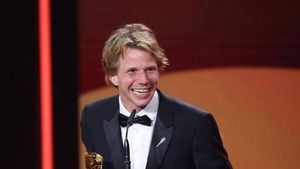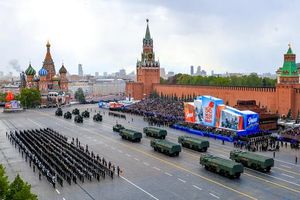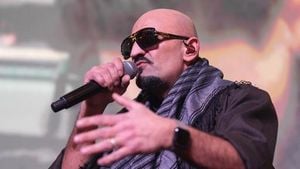Rome woke up under a leaden sky on Thursday, May 8, 2025, as faithful pilgrims and curious onlookers gathered in St. Peter’s Square, eagerly hoping to witness the sight of white smoke signaling the election of a new pope. This morning’s two ballots ended without a result, prolonging the anticipation that had been building since the conclave began the previous day. The day before, on May 7, many were surprised by the delay in the black smoke signal, which was perceived as unusually late, leaving the faithful and spectators in a state of uncertainty.
The press had taken their positions from early morning, prepared for the possibility of a papal election. Cardinal Re, the Dean of the College of Cardinals, expressed hope that white smoke would emerge by evening. However, if no pope was elected that night, tomorrow’s ballots could lead to more difficult paths, raising the stakes for the waiting crowd.
As the day progressed, the atmosphere in St. Peter’s Square grew increasingly tense. The crowd, swelling with hope and anxiety, awaited either black or white smoke from the chimney of the Sistine Chapel, a traditional signal of the conclave’s outcome. The uncertainty was palpable; if the election occurred today, the new pope could be one of the candidates considered likely before the conclave began. But if the election were postponed to tomorrow, the situation could become more complex, with the potential for unexpected developments.
In a twist of tradition, it was revealed that the Vatican would be reusing cassocks from past elections, a decision seen as an homage to the environmentally conscious approach of the late Pope Francis, who passed away on April 21, 2025. The Gammarelli family, renowned tailors who have been stitching vestments for popes for over a century, had prepared for this conclave but were informed that their services would not be needed just yet. Stefano Gammarelli, the sixth-generation tailor, expressed hope for the next conclave, noting, "We will hope for the next conclave," as they would not be dressing the new pope this time around.
The Gammarelli team had gathered measurements of the cardinals, creating cassocks for those they believed stood a good chance of being elected. This preparation is a blend of tradition and anticipation, as they rely on their experience and a bit of divine luck. Gammarelli recounted a humorous anecdote from the 1958 election of Pope John XXIII, who famously appeared in a cassock that was cut in half at the back due to a sizing error. "Someone had given him the wrong size," Gammarelli said, illustrating the often unpredictable nature of the conclave.
Meanwhile, Raniero Mancinelli, another tailor with over 70 years of experience, also prepared for the eventuality of a new pope, despite not receiving a call to make the cassocks. He adhered to tradition, ensuring that when a new pope is elected, he will wear a hand-stitched light wool skirt, a white robe, a silk sash, and a white zucchetto. The zucchetto, or skullcap, varies in color depending on the rank of the clergy, with white reserved for the pope.
The fashion choices of the popes have historically reflected their personalities and priorities. Pope Francis, who was elected in 2013, favored simplicity, opting for cheap light wool. In contrast, his predecessor, Pope Benedict XVI, was known for his elegant style and was even listed among Esquire’s best-dressed men in 2007. Benedict’s red shoes and traditional garments were a nod to the church’s history, while Francis sought to bring the church into a more modern and accessible light.
The conclave, a solemn and secretive process, began on Wednesday afternoon, May 7, when the 133 cardinal-electors convened in the Sistine Chapel behind locked doors. The first ballots were cast, but the initial votes were inconclusive, leading to the black smoke signals that indicated no pope had been elected. However, the atmosphere shifted dramatically on Thursday afternoon when white smoke billowed from the chimney, signaling the successful election of a new pope.
Crowds erupted in cheers as the white smoke emerged, a moment steeped in tradition that marks the end of the conclave. The new leader of the world’s 1.4 billion Catholics will soon be introduced by Cardinal Proto-Deacon Dominique Mamberti, who will announce, "Habemus papam," meaning "We have a pope." This phrase will herald the new pontiff’s appearance on the balcony of St. Peter’s Basilica, where his identity will be revealed to the eager crowd below.
The election of the new pontiff comes on the second day of the conclave, a significant moment for the Catholic Church as it seeks to move forward after the passing of Pope Francis. The anticipation surrounding the new pope’s identity reflects the hopes and aspirations of the faithful, who look to their new leader to guide them in the years to come.
As the day draws to a close, the excitement and hope in St. Peter’s Square continue to build. The faithful, having waited patiently through the uncertainty of the past days, are now on the brink of witnessing a historic moment in the life of the church. The conclave, steeped in tradition and ritual, not only signifies the election of a new pope but also reflects the ever-evolving relationship between the Vatican and its followers. With the promise of a new leader, the Catholic Church stands at a pivotal moment, ready to embrace the future.




